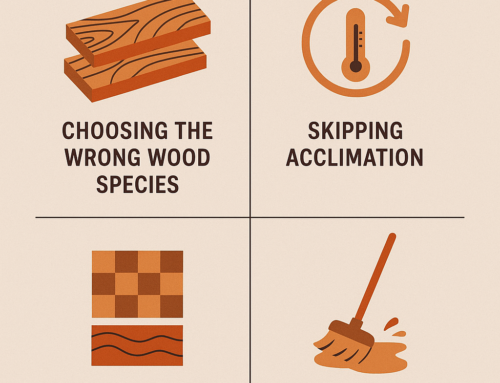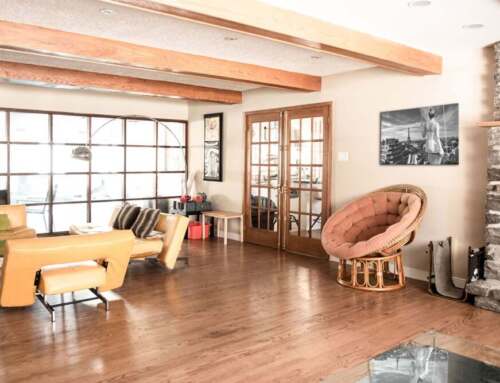Wood Floors: When to Refinish – Expert Tips
Welcome to our comprehensive guide on wood floor refinishing. As flooring specialists with years of experience, we understand the importance of maintaining the beauty and longevity of your wood floors. In this article, we will provide you with expert advice and insights to help you determine when it’s time to refinish your wood floors. By following our recommendations, you can ensure that your floors retain their original luster and charm for years to come.
Signs Of Wear And Damage
Wood floors are known for their durability, but over time, they can show signs of wear and damage. By recognizing these indicators, you can take proactive steps to refinish your wood floors before further deterioration occurs.
- Worn Finish
One of the first signs that your wood floors may require refinishing is a worn finish. High-traffic areas, such as entryways or hallways, often exhibit more wear than other parts of the floor. Look for areas where the finish has become dull, scratched, or faded. If the protective finish has worn away, it’s time to consider refinishing.
- Deep Scratches And Gouges
Wood floors can develop deep scratches and gouges over time, especially in homes with children or pets. These imperfections not only detract from the aesthetic appeal of your floors but also leave them vulnerable to moisture and further damage. If you notice deep scratches or gouges that are noticeable even after cleaning, refinishing is recommended.
- Fading And Sun Damage
Exposure to sunlight can cause wood floors to fade and lose their original color. If you have areas of your floor that are significantly lighter or darker than others, it could indicate sun damage. Refinishing the floors will not only restore their color but also provide additional protection against harmful UV rays.
- Water Damage And Stains
Water damage is a common issue for wood floors, especially in kitchens, bathrooms, or areas prone to spills. If you notice any areas where the wood has become discolored, warped, or swollen, it’s crucial to address the water damage promptly. Refinishing the affected sections will help prevent further deterioration and restore the beauty of your floors.
DIY vs. Professional Refinishing
Once you’ve identified the need for wood floor refinishing, the next decision is whether to tackle the project yourself or hire professionals. While DIY refinishing may seem like a cost-effective option, it’s essential to consider the complexity and potential risks involved.
DIY Refinishing
DIY refinishing requires proper tools, knowledge of the refinishing process, and meticulous attention to detail. If you have experience working with wood and feel confident in your skills, you may be able to achieve satisfactory results. However, keep in mind that DIY refinishing can be time-consuming and physically demanding, particularly for larger areas or intricate flooring patterns.
Professional Refinishing
Hiring professional flooring specialists offers several advantages. Experienced professionals have the expertise and equipment necessary to achieve superior results efficiently. They can assess the condition of your floors accurately, recommend the appropriate refinishing technique, and ensure that the process is carried out with minimal disruption to your home. Professional refinishing also comes with the added benefit of warranty coverage and guarantees for the work performed.
The Refinishing Process
Now that you’ve made the decision to refinish your wood floors, let’s delve into the refinishing process itself. While the specific steps may vary depending on the type of flooring and the extent of the damage, the following overview will give you a general idea of what to expect.
- Inspection And Preparation
Before beginning the refinishing process, thorough inspection and preparation are crucial. This includes assessing the overall condition of the floor, repairing any structural issues, and ensuring the area is free of furniture and debris. The floor will also need to be thoroughly cleaned and sanded to remove the existing finish.
- Stain Selection
Choosing the right stain is an important step in the refinishing process. It allows you to enhance or change the color of your wood floors according to your preferences. Take into consideration factors such as the existing wood species, the desired outcome, and the overall aesthetic of your space.
- Applying The Finish
Once the stain has dried, it’s time to apply the protective finish. There are various options available, including polyurethane, oil-based finishes, and water-based finishes. Each has its advantages, such as durability, ease of application, and environmental impact. Consulting with a flooring specialist can help you determine the best finish for your specific needs.
- Drying And Curing
After applying the finish, the floors need adequate time to dry and cure. This process ensures that the finish adheres properly and provides optimal protection. It’s essential to follow the manufacturer’s instructions regarding drying times and avoid placing furniture or rugs on the floors until they are fully cured.
Conclusion
Wood floor refinishing is a vital process to maintain the beauty and integrity of your floors. By recognizing the signs of wear and damage, you can take timely action to refinish them and prevent further deterioration. Whether you choose to tackle the project yourself or hire professionals, the refinishing process requires careful planning and attention to detail. Remember to select the appropriate stain and finish to achieve the desired results. By following the expert advice provided in this guide, you’ll be well-equipped to restore your wood floors to their former glory and enjoy their timeless elegance for years to come. Visit our showroom in Pensacola, Florida. You may also visit our website at www.troendlehardwood.com. Using the contact form on our contact page. Either way, we look forward to hearing from you!
Frequently Asked Questions
- How often should I refinish my wood floors?
The frequency of wood floor refinishing depends on several factors, including the amount of foot traffic, the type of finish, and the overall condition of the floors. As a general guideline, it is recommended to refinish your wood floors every 8 to 10 years. However, if you notice significant wear, deep scratches, or faded areas, refinishing may be necessary sooner.
- Can I spot-refinish only certain areas of my wood floors?
Spot-refinishing is possible in some cases, particularly if the damage is limited to a small section of the floor. However, keep in mind that achieving a seamless result can be challenging. The newly refinished area may appear slightly different from the rest of the floor, especially if the existing finish has aged. It’s best to consult with a professional flooring specialist to assess the feasibility of spot-refinishing and ensure the best possible outcome.
- How long does the wood floor refinishing process take?
The duration of the refinishing process depends on various factors, such as the size of the area, the extent of the damage, and the specific techniques used. On average, the refinishing process can take anywhere from a few days to a week. It includes preparation, sanding, staining, applying the finish, and allowing sufficient drying and curing time. Hiring professionals can help expedite the process and ensure more efficient and timely completion.
- Will refinishing my wood floors eliminate all scratches and stains?
Refinishing your wood floors can significantly improve their appearance and reduce the visibility of scratches and stains. However, it’s important to note that deep scratches or stains that have penetrated the wood may require additional measures, such as board replacement or more extensive repairs. The refinishing process will enhance the overall look of your floors, but complete elimination of all imperfections may not be possible.
- How can I maintain my refinished wood floors?
To maintain the beauty and longevity of your refinished wood floors, it’s important to follow a few simple maintenance guidelines:
- Clean regularly using a soft broom or vacuum cleaner to remove dust and debris.
- Use a damp mop or specialized wood floor cleaner to remove stains and spills promptly.
- Place doormats at entryways to minimize the tracking of dirt and grit onto the floors.
- Avoid dragging heavy furniture or sharp objects across the floor, as they can cause scratches.
- Place protective pads under furniture legs to prevent indentations.
- Limit exposure to direct sunlight by using curtains or blinds to minimize fading.
- Consider periodic recoating to refresh the protective finish and extend the lifespan of your floors.
By implementing these maintenance practices, you can preserve the beauty and integrity of your refinished wood floors for years to come.



